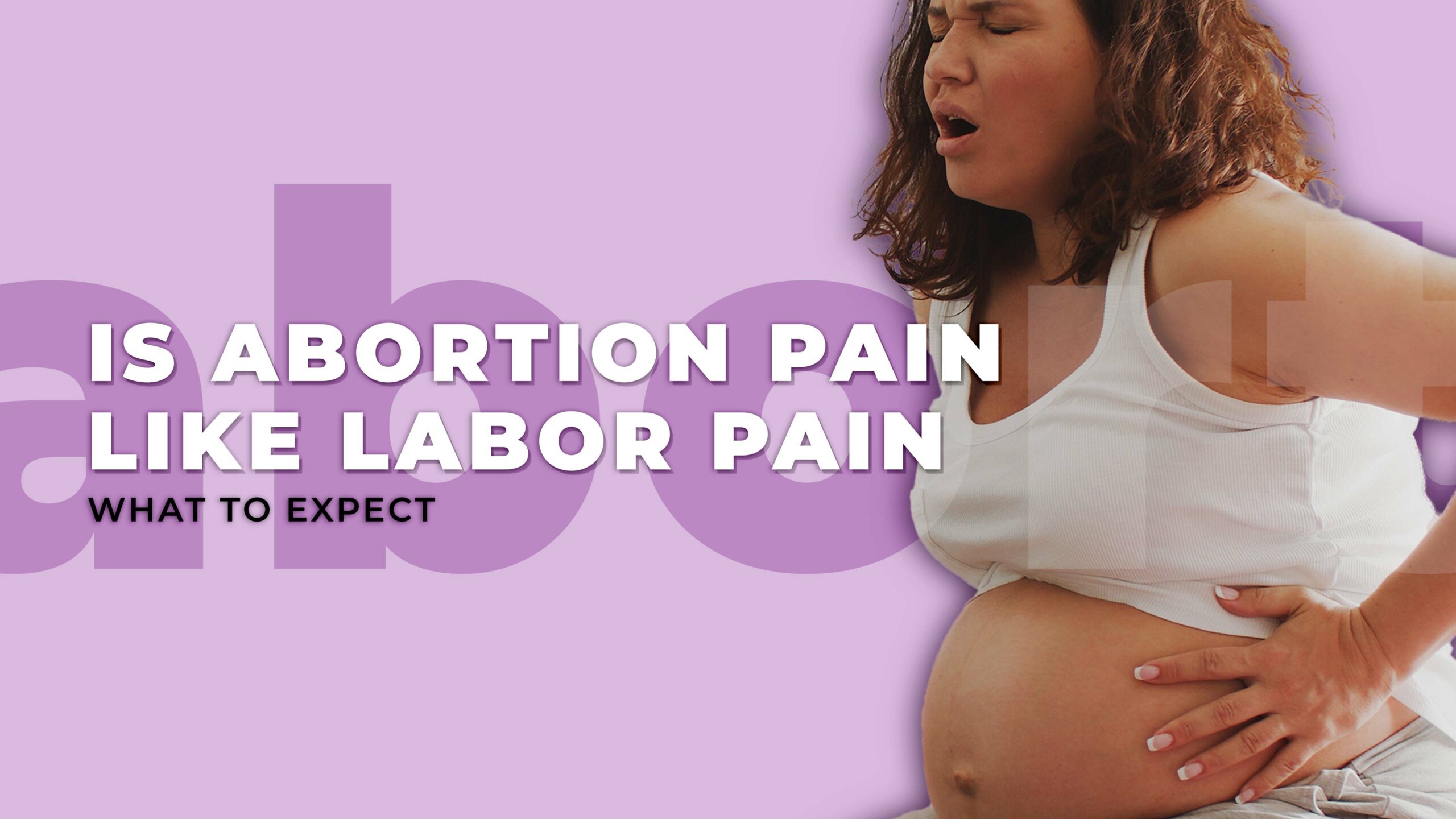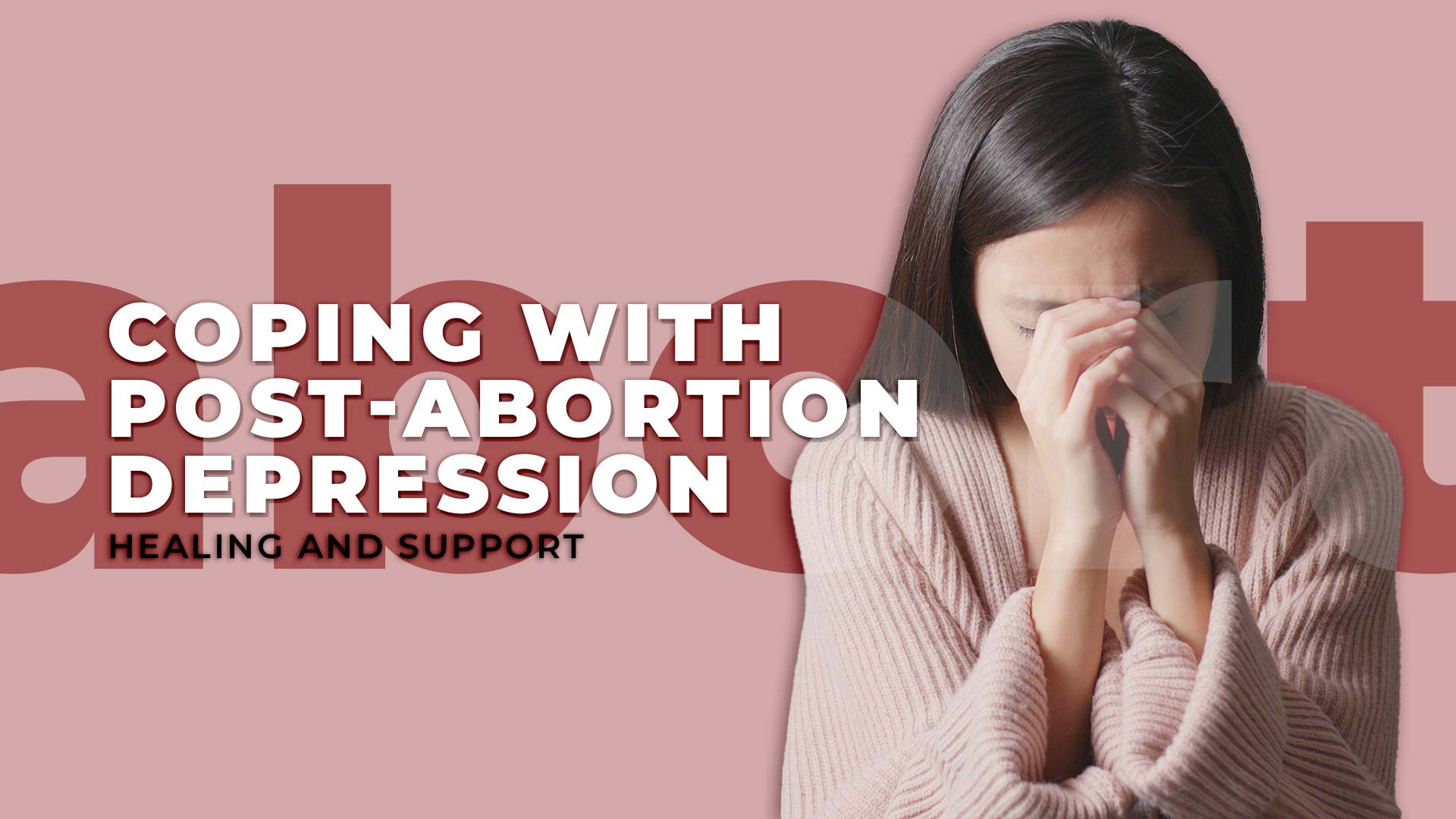Ending an unwanted pregnancy in a safe manner is essential. Abortion is a legal and safe option for doing so. While some discomfort, such as pain or cramping, may be experienced during the procedure, it is generally manageable. It’s important to understand what to expect and how to manage any discomfort during the process.
The sensation of pain during an abortion can vary significantly from person to person. Factors such as the individual’s pain tolerance and the type of abortion procedure can affect the level of discomfort experienced. If you are considering abortion as an option, it is important to understand what to expect regarding pain, how to manage it, and the potential side effects.
Is Abortion Painful?
The level of pain and other side effects experienced during an abortion can vary from person to person. Some women may feel pain, while others may only experience discomfort similar to menstrual cramps. Factors that can impact the level of pain include
- overall health,
- underlying medical conditions,
- pain tolerance,
- pregnancy stage,
- stress and
- emotions can affect the level of pain.
Additionally, the type of abortion plays a significant role in determining the level of discomfort. The most common types of abortion include
- medical abortion,
- vacuum aspiration, and
- dilation and evacuation.
It’s worth noting that there are also self-induced abortions which are often done with unregulated and potentially dangerous methods.
Types of abortion

Medical Abortion
Medical abortion is a procedure in which a person takes two prescription abortion pills to end a pregnancy. This type of abortion is typically recommended by a doctor up to 11 weeks after the last period. The first pill, mifepristone, prevents the pregnancy from developing, and the second pill, misoprostol, causes the uterus to contract and expel the pregnancy tissue. This can cause moderate pain and cramping for some people.
The experience of a medical abortion can vary from person to person and can be described as similar to having a heavy period or more intense cramping. The pregnancy tissue is typically expelled within 4-5 hours, and some bleeding or spotting may occur for several weeks after the procedure.
Vacuum Aspiration
Vacuum aspiration is a surgical method of abortion that uses gentle suction to remove the pregnancy tissue. It is typically performed up to 13 weeks into a pregnancy. Prior to the procedure, the cervix is numbed with an injection or medication, and in rare cases, a general anesthetic may be given.
The procedure is usually not painful, but some people may experience a dragging or pulling sensation. After the procedure, moderate cramping may be experienced for 1 or 2 days, and some may experience bleeding or spotting for up to 2 weeks.
Dilation and Evacuation
Dilation and evacuation is a surgical abortion method recommended for pregnancies that have advanced past 13 weeks, according to The American College of Obstetricians and Gynecologists (ACOG). The procedure is done under general anesthesia, which means the person will be asleep and will not feel any pain during the procedure.
The procedure begins with dilators which are thin rods used to open the cervix. After this, forceps and suction are used to remove the pregnancy tissue. After the procedure, individuals may experience cramping for 1 or 2 days and some bleeding or spotting for up to 2 weeks.
Self-Induced Abortion
Self-induced abortions, also known as DIY abortions, are performed without a doctor’s involvement or in a clinic. They can be done by taking non-prescribed medication or by using foreign objects inserted into the vagina. The level of pain experienced during a self-induced abortion varies depending on the method used.
Ways To Minimize Pain
There are steps that an individual can take to reduce the discomfort and potential adverse effects of an abortion, such as:
- Medical Abortion
The level of pain experienced during a medical abortion can vary from person to person. Some women may experience intense period cramps, while others may experience less discomfort. To manage pain, doctors may recommend over-the-counter pain relievers or prescribe medication like ibuprofen. Certain home remedies, such as
- warm showers,
- wearing loose-fitting clothes,
- hot water bottles, and
- deep breathing exercises,
may also help to alleviate pain and discomfort.
- Surgical Abortion
The level of pain experienced during a surgical abortion varies among individuals. The procedure may be uncomfortable for some and painless for others due to the use of anaesthesia. After the procedure, some women may experience cramping for a short period of time. To alleviate pain and other symptoms, over-the-counter pain relievers like ibuprofen can be taken. Aspirin is not recommended as it can cause increased bleeding. Home care methods such as
- wearing loose-fitting clothing,
- taking warm showers, and
- using a heating pad on the abdomen can also help alleviate discomfort.
Call your healthcare provider if you experience discomfort or feel unwell even after a few days.
Side Effects and Risks

After an abortion, certain individuals might encounter side effects, which we will outline below for each type of abortion.
- Medical Abortion
Medical abortion can lead to vaginal bleeding similar to heavy periods, as well as the passing of large menstrual clots for several days. Additionally, some bleeding and spotting may occur for a couple of weeks after the procedure. Other possible side effects include
- cramping,
- nausea,
- vomiting,
- headache,
- fever,
- chills, and
- diarrhea.
These side effects may be temporary and last for a day or two. It is important to contact your healthcare provider if you experience a fever lasting longer than 48 hours or an unusual odor from your vagina, as this may indicate an infection.
The British Pregnancy Advisory Service states that in some cases, a follow-up procedure may be needed after a medical abortion, as approximately 2% of cases result in an incomplete abortion. In such instances, a surgical abortion may be required to remove any remaining pregnancy tissue.
- Surgical Abortion
The side effects of surgical abortion are generally less severe than those of medical abortion. However, some individuals may experience
- stronger cramps,
- chills,
- fever,
- nausea,
- vomiting,
- dizziness, and
- heavy bleeding
These effects can vary from person to person. It is important to contact your healthcare professional if you experience a fever lasting more than 48 hours or heavy bleeding.
The American College of Obstetricians and Gynecologists (ACOG) states that surgical abortions have lower rates of complications compared to medical abortions. The risk of complications during a second-trimester abortion is less than 1 in 1,000.
- Self-Induced Abortion
Performing an abortion without the assistance of a medical professional can lead to various complications, including
- bacterial infections,
- incomplete abortions,
- bleeding, and
- injuries to the uterus, cervix, and other organs.
These types of abortions, known as self-induced abortions, are more common in lower or middle-income countries where there may be disparities in access to healthcare.
Does the Embryo Experience Pain during Abortion?
When considering an abortion, some may wonder if the fetus experiences pain during the process. Pain is perceived when signals from an injury are transmitted to the brain, which requires specific structures to process them. Research indicates that these structures necessary for pain perception do not develop until the 20th week of pregnancy or later. Therefore, the fetus is not capable of experiencing pain during an abortion.
Emotional Side Effects
The emotional reactions to abortion can vary greatly among individuals. Some may feel a sense of relief and freedom after ending an unintended pregnancy, while others may experience feelings of depression, guilt, or loss, even if they believe it was the right decision. It is not uncommon for individuals to have a complex mix of emotions following an abortion.
It’s important to understand that everyone’s emotional reactions to abortion may be different. These emotions are normal, and there is no right or wrong way to feel. Coping with these emotions can be done by talking to a partner or seeking help from a healthcare professional. They can offer support groups and therapy to help process the emotions. The most important thing is to have a safe and legal abortion.
Is Abortion The Right Decision For You?

When making a decision about abortion, it’s important to gather information from reliable sources and consider one’s own values and circumstances. Consulting a healthcare professional or seeking information from reputable organizations can help individuals make an informed choice. It’s important to remember that the decision to have an abortion is a personal one, and what may be the right choice for one person may not be for another.
The Bottom Line
Both medical and surgical abortions are effective methods of terminating a pregnancy, but each woman’s experience can vary. Medical abortions may cause discomfort from uterine contractions, but it can usually be managed with pain medication. Surgical abortions may not cause any pain during the procedure due to the use of anesthesia, but some cramping may occur after the procedure.
When considering abortion, it is important to consult a healthcare professional and discuss all options, including the benefits and risks of both medical and surgical procedures, as well as any preparation needed, potential side effects, and recovery time. It is also important to be aware of any symptoms to look out for during and after the abortion process.
References
- Chen MJ, Creinin MD. Mifepristone With Buccal Misoprostol for Medical Abortion: A Systematic Review. Obstet Gynecol. 2015 Jul;126(1):12-21. doi: 10.1097/AOG.0000000000000897 https://journals.lww.com/greenjournal/Abstract/2015/07000/Mifepristone_With_Buccal_Misoprostol_for_Medical.4.aspx
- Bolnga, J. W., et al. (2021). Incidence of self-induced abortion with misoprostol, admitted to a provincial hospital in Papua New Guinea: A prospective observational study.
https://obgyn.onlinelibrary.wiley.com/doi/epdf/10.1111/ajo.13413 - Dilation and evacuation. (n.d.).
https://www.bpas.org/abortion-care/abortion-treatments/surgical-abortion/dilatation-and-evacuation/ - Georgsson, S., et al. (2019). Pain and pain management during induced abortions: A web-based exploratory study of recollections from previous patients [Abtract].
https://pubmed.ncbi.nlm.nih.gov/31237008/ - Harris, L. H., et al. (2020). Complications of unsafe and self-managed abortion.
https://www.nejm.org/doi/10.1056/NEJMra1908412 - Induced abortion. (2021).
https://www.acog.org/Patients/FAQs/Induced-Abortion - Lohr, P. A., et al. (2014). Abortion.
https://www.bmj.com/bmj/section-pdf/750967?path=/bmj/348/7940/Clinical_Review.full.pdf - Derbyshire SW, Bockmann JC. Reconsidering fetal pain. J Med Ethics. 2020 Jan;46(1):3-6. doi: 10.1136/medethics-2019-105701. PMID: 31937669. https://jme.bmj.com/content/46/1/3
- Pills by post – Abortion pill treatment at home. (n.d.).
https://www.bpas.org/abortion-care/abortion-treatments/the-abortion-pill/remote-treatment/ - Saultes, T. A., et al. (2009). The back alley revisited: Sepsis after attempted self-induced abortion.
https://www.ncbi.nlm.nih.gov/pmc/articles/PMC2791734/ - Shamsi, S., et al. (2020). An overview of unsafe abortion: Patterns and outcomes in a tertiary level hospital [Abstract].
https://pubmed.ncbi.nlm.nih.gov/32844789/ - Vacuum aspiration. (n.d.).
https://www.bpas.org/abortion-care/abortion-treatments/surgical-abortion/vacuum-aspiration/ - Zafar, H., et al. (2018). Low socioeconomic status leading to unsafe abortion-related complications: A third-world country dilemma.
https://www.ncbi.nlm.nih.gov/pmc/articles/PMC6298628/





